| ASPECTS OF HARVINGTON'S HISTORY |
A personal rendering
|
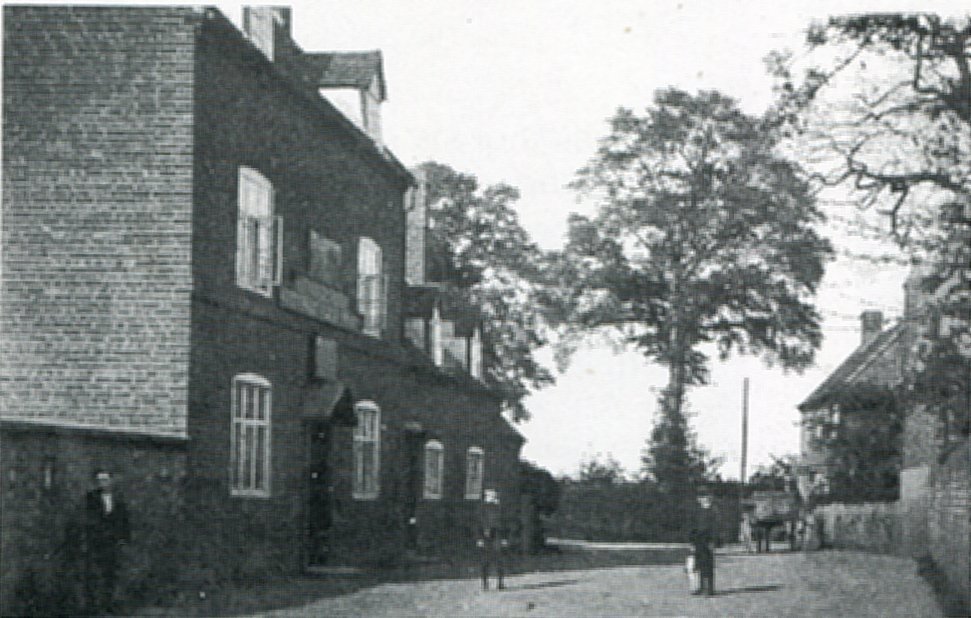
Coach & Horses |
|
Home
Booklets etc.
Buildings
Census
Church
Dovecote
Electoral
Facebook
Families
Fields
Histories
Maps
Newspapers
Notes & Queries
PC
People
Pictures
Pubs
School
Sports
Station
Transport
War Time
WI
Wills:
Contact:
|

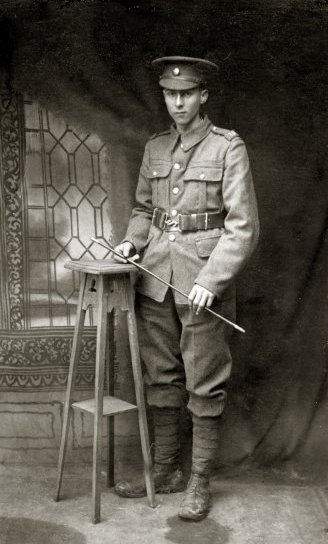

|
|
HARVINGTON'S
WAR DEAD
by
A. W. Stephens
|

|

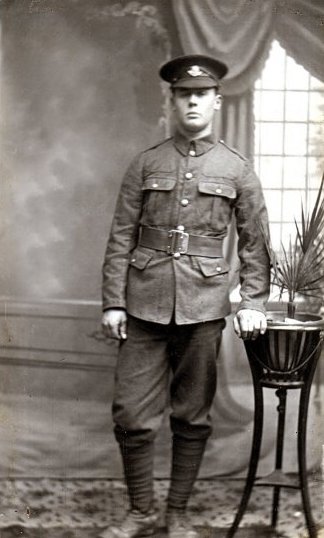

|
|
Mr Stephens kindly allowed this Website to host his detailed work on the men from Harvington who died in the First World War. As Mr Stephens explains in his introduction, he was inspired to write these biographies by a picture frame hanging in the church. His work contains photographs of most of the Harvington men who were killed, their background, Regiments, campaigns and where they died.
It is assumed that the frame was placed on the wall by the south door, some time after WW1, but who placed it there is now not known. The Rector at the time was Rev. James Davenport. Alongside is a wooden plaque containing the names of the soldiers. Mr Stephens's book also contains Thomas Herbert McGee who died in the Second World War.
Julian Rawes 2014, Crooked Walls, Harvington
|
|
Harvington’s
War
Dead
Brief Biographies by A.W. Stephens
|
|
A W Stephens
Brookedale
Harvington
2008
|
|
Whilst sitting in the church one day my eyes were drawn to the war memorial on the wall with its now fading photographs of the fallen and it occurred to me that although there are names and faces, there are no other details such as what regiments they were in or where they served.
I was further disconcerted to realise that I, who was born in 1950 am closer in time to the First World War than my eldest son who was born in 1980 is to the Second. It is now unlikely that the children at the village school have a family member who served in even the Second World War and can have no conception of the scale of commitment that was made in fighting the two world wars. The raw figures are that the British Army today is about 100,000 strong, at its peak during the First World War it was over five and a half million from the home islands (equivalent in todays enlarged population to about seven million) with another three million coming from the Empire. These figures do not of course include men serving in the navy or air force neither do they include the men and women working in industry to keep a force of such size supplied. Furthermore, the human cost of fighting a global war has now almost passed from living experience so that while the death of a single soldier in action is still (rightly) national news the average daily death toll 1914-18 was 613.
Words cannot easily convey the impact such statistics would have on daily life, a difficulty not made any easier by our slipshod use of language. If a shopping trip is described as “hell” how can we comprehend an assault across “no mans land” in the First World War. If a sporting result is a “disaster”, what words can we use for Gallipoli, or Kut-al-Amara in modern Iraq where more men were lost in an unsuccessful attempt to relieve a besieged garrison than were in the garrison itself, or the fall of France or Singapore in the Second World War? One anecdote is perhaps sufficient, in August 1940, Winston Churchill announced in the House of Commons that British losses in the first eleven months of the war were about 92,000 killed, wounded and captured, the astonishing thing to modern eyes is that he was using this figure to boost morale at a time when the war was going very badly for us, comparing it to the 365,000 losses in a similar time frame of the First World war. It was with this in mind that I felt that I should perhaps try to delve a little deeper and “flesh out” the simple names on the memorial.
It is not the purpose of this record to give detailed accounts of battles, in any case it is instructive to see that death became an everyday event not necessarily related to a specific operation or battle, but to illustrate how ordinary people of two successive generations, whose only difference from us is the dates when they were born were caught up in huge events. At the time, the First World War was known simply as the “Great War”, an event without precedence, almost beyond comprehension. Now, two generations beyond the Second World War perhaps we should apply the term to the whole period 1914-1945. With foreign travel no longer unusual it is difficult to appreciate how the men of 1914 must have felt, when in all innocence they went of to fight not just in Flanders, but in the Balkans, Gallipoli, Mesopotamia, Palestine, and to a lesser extent Africa and how must they have felt when, just 21 years after their war ended their sons went off to do the same thing, this time knowing exactly what lay in store for them.
Harvington has a preponderance of losses for the First World War but the figures if not the exact ratio are replicated in almost every parish throughout the land and these of course are the fatalities it is reasonable to suppose that there were perhaps three seriously wounded for every one killed.
|
| INDEX TO BIOGRAPHICAL NOTES |
|
- Albert Joyner,
- Sam Mason,
- Charles Earnest Ingram,
- Uriah Leonard Hall,
- Frank Felix Cook,
- William Thomas Marsh,
- Walter Joseph Hancock,
- George Edward Withers,
- John Alfred Houghton,
- George Edward Taylor,
|
- Jesse Ludlow,
- William Henry Hancock,
- Sidney Charles Ward,
- Howard Ludlow,
- William Francis Bishop,
- Francis Stephen Ingram,
- Francis Smith,
- William Alfred Victor Richard Andrews,
- Alfred Ludlow,
- Thomas Herbert McGee,
|
|
|
Albert William Joyner |
World War 1
|

Albert William Joyner
Private Albert Joyner was a member of the church choir and the son of William and Mary Joyner who lived in Village Street, Harvington (1901census). He volunteered as soon as the war broke out leaving Harvington on 2/9/1914. He joined 2nd Battalion Worcestershire Regiment, which became part of 5th Brigade 2nd Division. The battalion itself had left England on 12th August only eight days after war had been declared and took part in the fighting throughout the autumn and winter of 1914/1915. Albert Joyner arrived in France 18th February 1915, and by early March the battalion was billeted in the village of Annequin about 20 miles north of Arras alternating in the front line at Cuinchy about 60 miles south-east of Calais with 2nd battalion Highland Light Infantry in what had now become static trench warfare with frequent artillery and sniper fire an ever present danger even on what were supposedly quiet days.
The Evesham Standard reported that he had been shot through the head and died almost instantly 8 March 1915. However, his name is recorded at Le Touret Military memorial on the D171 Bethune to Armentieres road in the Pas de Calais along with over 13000 others who have no known grave. There was a memorial service at Harvington for him on 21/3/1915. He was aged 20.
|
|
|
Sam Mason |
World War 1
|

Sam Mason
Sam Mason was amongst the first wave of volunteers leaving Harvington 2nd September 1914 just after the outbreak of war. He joined 3rd Battalion Worcestershire Regiment, which became part of 7th Brigade 3rd Division. He first arrived in France 20th January 1915. Throughout the winter and spring of 1915 the 3rd battalion was involved in the fighting along the front. On the evening of the 5th June the battalion moved into trenches just outside Hooge near Ypres but was relieved on the 9th June in preparation for an attack on 16th June near Lake Bellewaerde three miles east of Ypres. The attack began at 0250hrs and during a day of ferocious fighting the German front line was captured and the second line reached, but although a German counter-attack was initially repulsed it proved impossible to hold and British forces withdrew to the old German front line with the intention of resuming the attack later. The Worcesters attacked at 1550 hrs. but were unable to make much headway and at 1800hrs the order was given that the attack be discontinued although because of heavy enemy fire the men were not able to be relieved until 2300hrs. It is surprising that any survived, for at one time observers were estimating 90 shells a minute were landing on the British positions of about 1000 yards square.
Sam Mason was posted missing on 16th June 1915. On one website he is described as a Private but in the Evesham Standard as a Corporal. It was reported in the Evesham Standard 20th May 1916 that his mother Mrs Mason, Alcester Road, Harvington had been informed that he was now presumed to have been killed 16th June 1915. His name is recorded on the Menin Gate at Ypres. A memorial service was held at Harvington 21st May 1916. He was 23 years old.
In an interesting postscript to this story, Olive Mason, Sam’s sister took up a post as nursery maid-governess at Posen, Germany two weeks before the war broke out. With the outbreak of war, she was held as a prisoner in reportedly poor health for nearly twelve months. She was eventually repatriated with the help of the American Consul via Holland 3rd August 1915.
|
|
|
Charles Earnest Ingram |
World War 1
|
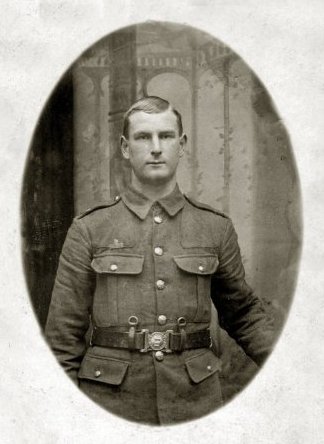
Charles Earnest Ingram
Charles Ingram was the son of Stephen Ingram 8, Leys Road, Harvington. He joined the Territorial Army nine months before the outbreak of war. The Worcestershire Regiments Territorial battalions were the 7th and 8th. When war was declared 4th August 1914 the 8th battalion was at summer camp at Minehead, the battalion returned to Worcester by train the following day to begin there preparations for deployment. On 8th August 1914, they left for Swindon then Stony Stratford, Brentford and Danbury in Essex. Whilst at Swindon on 11th August 1914 they were invited to volunteer for service oversees and, this being a territorial battalion although many would have had other commitments nearly all did so. The battalion then became known as 1/8th Worcestershire regiment. On 19th September 1914, the battalion moved to Maldon in Essex. On 30th March 1915, the battalion sailed on SS Invicta from Folkestone to Boulogne and moved to the front 15th May 1915 taking up positions around Ploegsteert about 10 miles south of Ypres. The battalion became part of 144th Brigade, 48th Division. He was killed on 25th June 1915 aged 19 in what was likely to have been an unremarkable day in a front that would remain largely unchanged for another three years. He is buried at Bailleul Communal Cemetery 9 miles southwest of Ypres.
|
|
|
Uriah Leonard Hall |
World War 1
|
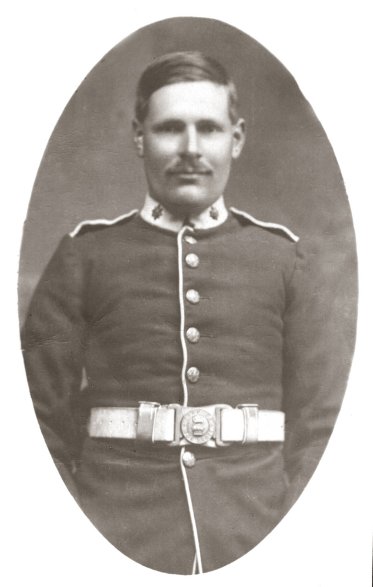
Uriah Leonard Hall
Known as Leonard Hall, he was the son of Edward and Emma Hall. Edward was born in Cirencester but Leonard was born in Salford Priors. The 1901 census records them as living in Village Street Harvington.
He left Harvington 2nd September 1914 and joined 2nd battalion Worcestershire Regiment. The battalion became part of 5th Brigade, 2nd Division. He arrived in France 27th May 1915. On 21st July the battalion relieved 2nd Grenadiers in the front line at Cuinchy. It had become common for both sides to tunnel under the opposing trench lines to lay mines. Early on the 24th July British sappers tunnelling towards German lines heard German sappers doing the same thing in the opposite direction. The British mines were immediately laid and fired destroying the German tunnel. The Germans began shelling heavily and Leonard Hall was killed in the evening 29th July 1915 aged 27. He is buried at Woburn Abbey cemetery, Cuinchy, midway between Bethune and La Bassee, not far from Arras. A memorial service held 8th August 1915.
|
|
|
Frank Cook, William Marsh and Walter Hancock |
World War 1
|
|
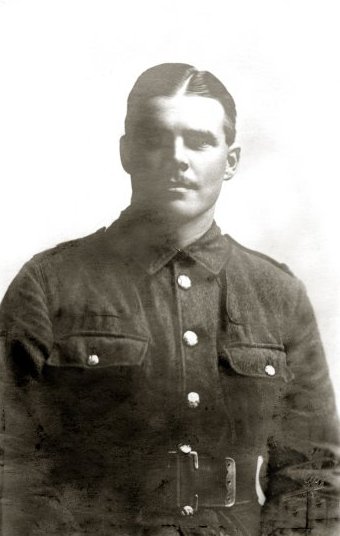
Frank Felix Cook |
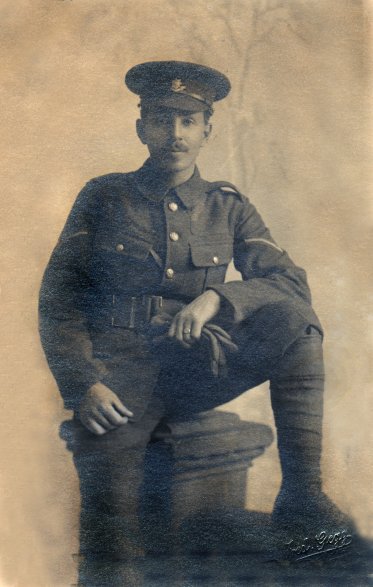
William Thomas Marsh |
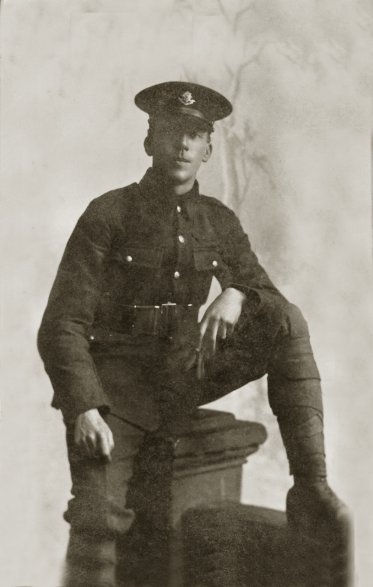
Walter Joseph Hancock |
|
|
Frank Cook, William Marsh and Walter Hancock almost certainly volunteered together for they all joined 9th Battalion Worcestershire Regiment that became part of 39th Brigade 13th Division. The Division came into existence because of Field Marshall Earl Kitcheners “call to arms” 11th August 1914. It was decided to raise six new armies of about six divisions or 100,000 men each. When the Front in France and Flanders solidified, it was decided to try to break the deadlock by attacking the Gallipoli Peninsula and capturing Constantinople (Istanbul) this would have the double benefit of defeating Turkey, which had entered the war on Germanys’ side 28th October 1914 and opening a supply route to Russia.
The 9th Worcesters left Blackdown on Salisbury Plain on Sunday 20th June and sailed from Avonmouth on board the “Cawdor Castle” to the Greek island of Mudros arriving 10th July 1915. On the 13th July they were then transhipped to the destroyer H.M.S. Reynard and the minesweeper H.M.S. Newmarket which then left for the Gallipoli Peninsula. They landed at “V” beach at the edge of the peninsula and marched around the coast to “Gully Beach” to the west where they held the line until they were withdrawn on 29th July by the minesweeper H.M.S. Ermine to the island of Lemmos in preparation for an attack on Sari Bair. On the evening of 3rd August they landed at Anzac cove where New Zealand guides took them to their positions at a place called (inappropriately) Rest Gully where despite the flies, heat and occasional shellfire they had to remain inconspicuous for two days. The attack began at 2030hrs 6th August and continued for about five days. It was a complete failure, so badly mauled were the 9th Worcesters that they were temporarily amalgamated with 7th Gloucestershire regiment.
Frank Cook son of John and Annie Cook who ran the Post Office at Harvington, died 9th August aged 23, William Marsh son of Herbert and Agnes Marsh, Village Street Harvington died 10th August aged 28, Walter Hancock son of Thomas and Elizabeth Hancock, Yew Tree Cottage, Harvington, died of wounds 10th August aged 26. Their names are recorded on the Helles Memorial on the Gallipoli peninsular.
Walter Hancock’s last letter home mentions that it is “very hot and that the routine is to spend four days in the trench where we get very little sleep and then have some rest and we need it, and are in sight of Achi Baba about 3 miles away”
|
|
|
George Withers and John Houghton |
World War 1
|
|
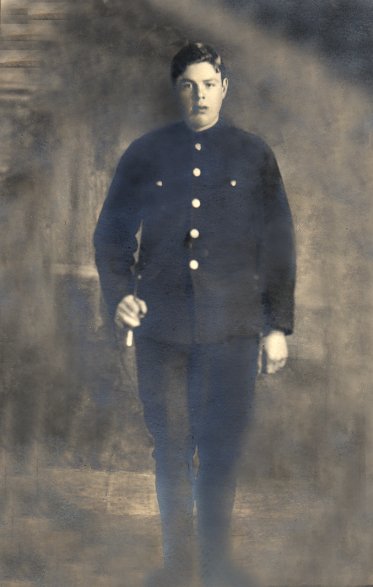
George Edward Withers |
|
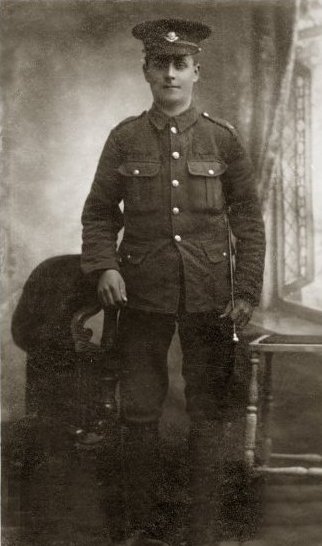
John Alfred Houghton |
|
|
Both George Withers and John Houghton volunteered as soon as war broke out. They joined 2nd battalion Worcestershire Regiment that became part of 5th Brigade, 2nd Division. By 1915, the western front had settled down to a long unbroken line of trenches stretching from the Channel to Switzerland and by the summer the first of the volunteers that had flocked to the colours with the outbreak of war had begun arriving in appreciable numbers. In what was the first large scale battle of the war (in terms of British forces) it was decided to try to break through the German lines at Loos near Lille. The battle began 21st September 1915 with an artillery bombardment lasting four days. The first assault troops left their trenches at 0630hrs 25th September 1915 with 5th brigade attacking north of a canal towards La Basse. The attack was a failure and by 0945hrs, the men were back in their original trench consolidating their positions, though with the battle continuing to their immediate south, their lives were far from comfortable. Reconnaissance patrols had to be undertaken and it is possible that it was on one of these that George Withers disappeared. It was reported in Evesham Standard 30th October 1915 that he had been missing since 26th September 1915 and was later assumed to have been killed on that date. His name is recorded on Loos memorial to the missing at Loos-en-Gohelle near the town of Lens. He was 21. His parents Frederick and Margaret Whithers lived in Village Street.
John Houghton was born in Risca, Monmouthshire the son of Alan and Caroline Houghton, who lived in Norton. I can only assume that by 1914 he was living Harvington and this is the reason he is on Harvingtons memorial rather than Nortons. He was shot in the head on 29th September 1915. The 5th brigade were still holding the same positions that they were 3 days earlier and it is quite likely that John Houghton was wounded while carrying out duties similar to George Withers such as reconnaissance or observation of enemy lines. He was moved to hospital in Rouen where he died 14th October 1915 aged 20. He is buried St Sever Cemetery, Rouen, and his name is recorded on a gravestone at St Egwins, Norton, along with that of his brother who died (of natural causes) the previous November. A memorial service for John Houghton was held at Harvington 24th October 1915.The B.E.F sustained over 61000 casualties with nearly 8000 dead in the Battle of Loos, which effectively ended on 13th October 1915 having failed to break the German line.
|
|
|
George Edward Taylor |
World War 1
|
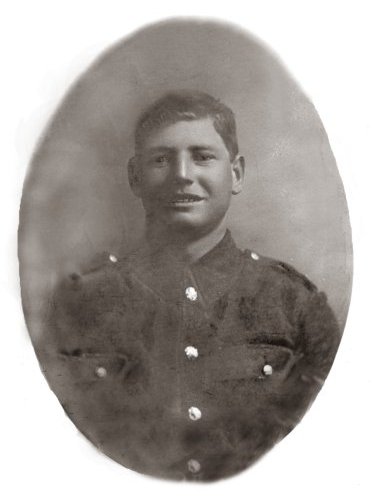
George Edward Taylor
|
|
George Taylor was born in Bishampton the son of George and Jane Taylor but was living in Harvington (1901 census, Village Street) when war broke out and volunteered in September 1914 quite possibly with Frank Cook, William Marsh and Walter Hancock for he joined 9th Battalion Worcestershire Regiment, which was part of 39th Brigade, 13th Division. On 16th February 1916, the Division, which was then based in Port Said, Egypt, left for Mesopotamia, part of the Ottoman (Turkish) empire, which had entered the war on Germanys’ side in October 1914. British forces had captured Basra in late 1914 and begun to advance on Baghdad but had been stalled at Ctesiphon and withdrawn to Kut-al-Amara 200 miles north of Basra where they were besieged. In a (yet another) attempt to lift the siege 13th Division, which had arrived in the area 27th March, attacked on 5th April. The Worcesters, who were still so weakened by their exertions in Gallipoli that they had to be brought up to strength by troops transferred from the North Staffordshire regiment, successfully attacked the Turkish positions at Hanna on 5th April. They then attacked the next enemy line a mile or so away at Falahiya, which was much more vigorously defended and were fought to a standstill, the next day an Indian division (7th Meerut) relieved them in ferocious fighting in which they lost 1200 men in 20 minutes. The following day (7th April), it was the turn of the 13th Division to relieve the 7th Division and renewed the attack on 8th April but again were unable to make headway. Fighting continued for about another fortnight without success. The garrison at Kut surrendered on 29th April 1916. The garrison was the 6th Poona Division and of the 2,600 British troops 1,700 died in captivity, of the 9,300 Indian troops, 2,500 died.
George Taylor was probably wounded between 5th and 9th April and is recorded as dying of wounds 10th April. He is buried at Amara on the left bank of the Tigris 300 miles from the sea. A memorial service was held for him at Harvington 7th May 1916. He was 23.
|
|
|
Jesse Ludlow |
World War 1
|
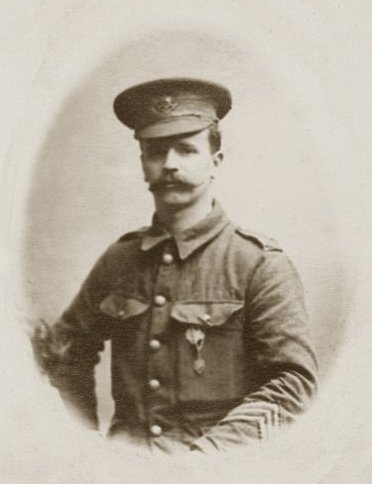
Jesse Ludlow
|
|
Jesse Ludlow was married and living at 17 Hylton Road Worcester. He was also the son of Charles Ludlow, Pool House, Harvington who at one time or another had seven sons serving in the army, four in the Great War. He was a reservist when war broke out. On mobilisation, he joined 1st battalion Worcestershire Regiment serving with 24th Brigade, 8th Division. He was wounded at Neuve Chapelle on 1st January 1915 but rejoined his battalion after two months. He was awarded the Military Medal for conspicuous gallantry during the battle of Contalmaison between 6th & 10th July 1916, which was part of the battle of the Somme. That battle which had begun 1st July, was to continue until 18th November.
24th Brigade went back into line 13th November between Les Boeufs and Gueudecourt and was subjected to particularly heavy shelling on 15th November. He was killed in action aged 29 on that day and his name is recorded on the Thiepval memorial to the missing which is located on the D73 just off the D929 the main Bapaume-Albert road.
A memorial service was held in Harvington on 3rd December 1916.
|
|
|
Harry Bradshaw |
World War 1
|
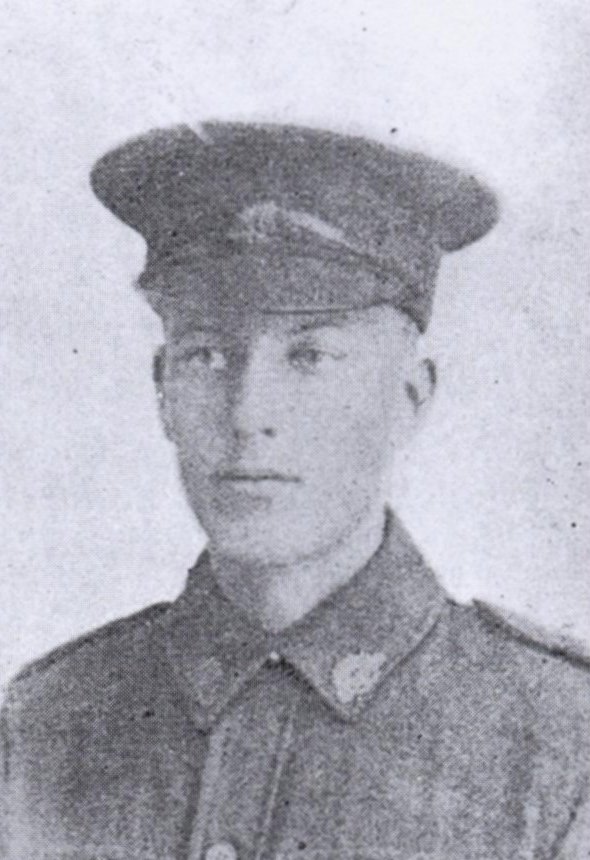
Harry Bradshaw
|
|
Harry Bradshaw does not appear on the war memorial at Harvington but his name is recorded at Church Lench. He was born in Atch Lench but the 1901 census shows that at that time he was living with his parents Arthur and Ann Bradshaw and his younger brother Arthur in Harvington. He is also identified both by the Evesham Journal and the Commonwealth War Graves Commission as being from Harvington.
When his mother died in October 1911, he went at age 13 to live with an uncle in Gumlu, Queensland, Australia. It was here that he enlisted 28th March 1916 into the Australian army.
He sailed from Brisbane on H.M.A.T. Clan McGillivray on 7th September 1916 to France, and was serving with 9th Battalion, 3rd Brigade, 1st Division Australian Imperial Forces when on 5th January 1917 he was “with a number of comrades laying telephone cables behind the front line. They had just finished for the day and were moving back to camp when two big shells dropped close to the party” five other soldiers were killed with him. His draft of reinforcements had only arrived 48 hours before. He is buried at Villers-Bretonneux cemetery 16 miles east of Amien towards St Quentin. He was 18.
|
|
|
Willian Henry Hancock |
World War 1
|
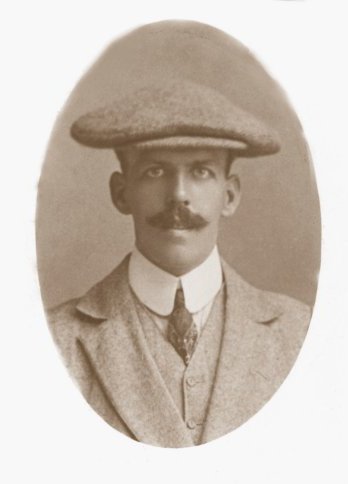
William Henry Hancock
|
|
William Henry Hancock was living in Princess Road Evesham, the brother of Walter Hancock mentioned earlier. He was attested under the Derby Scheme, which was brought in to stimulate recruitment in October 1915 and placed in a low category. I get the impression that he was not in the best of health as he was classed as B1.
He joined at Norton Barracks 15th February 1915 and was posted to the Army Service Corps.
He died in Bath hospital from meningitis 15th March 1917 aged 31 and is buried in the Harvington Cemetery.
|
|
|
Sidney Charles Ward |
World War 1
|

Sidney Charles Ward
|
|
Sidney Charles Ward as he is identified in the church or is it Charles Sidney Ward? as he is identified on his gravestone and by the Commonwealth War Graves Commission was the eldest son of Henry and Edith Ward, Leys Road Harvington. He joined the army on his 18th birthday and was attached to 11th battalion, Duke of Cornwall’s Light Infantry at Chiseldon Camp, Wiltshire, where he contracted measles and pneumonia. His mother was with him when he died aged 18 on 26th April 1917. He is buried in Harvington Cemetery.
|
|
|
Howard Ludlow |
World War 1
|
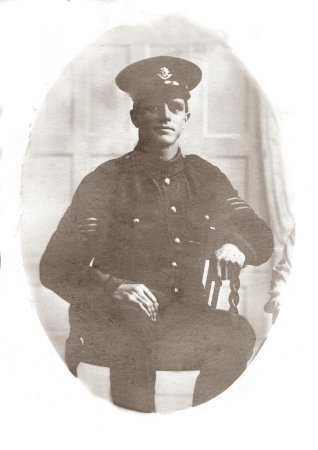
Howard Ludlow
|
|
Howard Ludlow was the son of Charles and Elizabeth Ludlow and brother of Jesse and Alfred and was living in Village Street, Harvington in 1901.
In 1917, he was serving with 2nd Battalion, Worcestershire Regiment, 100th Brigade 33rd Division which was taking part in the Battle of Arras, (9th April-15th May 1917). The regimental diary records that a small party of 25 men of 2nd battalion took part in a raid on German lines on the night of 14th/15th May north of Croisilles near Arras suffering five missing and five wounded. It may well be that Howard Ludlow was one of these wounded for he is recorded as dying from wounds 20th May 1917. He is buried in Bucquoy war cemetery, Ficheux on the D919 road 6 miles south of Arras. He was 32.
|
|
|
William Francis Bishop |
World War 1
|
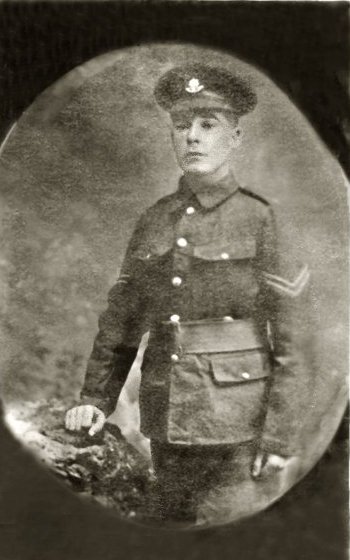
William Francis Bishop
|
|
William Bishop was the son of William and Sarah Bishop of Malt House Cottage, Harvington. Having previously worked at Arley Pit, Fillongby near Coventry, he joined the army 2nd July 1914 serving in the 10th Battalion Worcestershire Regiment. The battalion became part of 57th Brigade, 19th Division which trained at Tidworth, Witshire, before crossing to France 11th-21st July 1915 where it remained throughout the war. He was badly wounded in May 1916 and spent some time in hospital in Sussex. He returned to France in October 1916.
He took part in the battle of Messines (7th June-10th November 1917). At 2300 hours 6th July an attack began on a position known as “Druid Farm” and almost immediately ran into heavy enemy fire, it was a complete failure and William Bishop was killed by a shrapnel wound to the head, death was said to be instantaneous. He was 22 years old and is commemorated along with 54,344 others on the Mennin Gate memorial to the missing at Ypres.
|
|
|
Francis Stephen Ingram |
World War 1
|
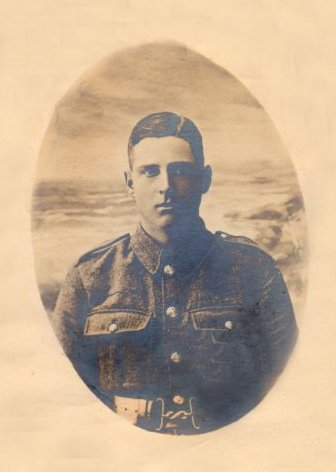
Francis Stephen Ingram
|
|
Francis Stephen Ingram was the brother of Charles and second son of Stephen and Sarah Ingram, 8 Leys Road Harvington. His name is given in the 1901 census as Frank. He was born in 1899
In 1918, he was serving in the 2nd Battalion Prince of Wales Volunteers (South Lancashire Regiment) part of 64th Brigade, 21st Division that was involved in the Battle of the Aisne.
He went into action 26th May and was posted missing 1st June. His parents received two cards saying that he had been wounded in the thigh and was in a prisoner of war camp at Rastatt, Baden, Germany. Later they received a letter from a Major MacDougall of the South African Forces say that “he himself was a P.O.W. in hospital with their son who had reached Rastatt on or before 31st May 1918 and that he had died on 8th June 1918”. He is buried at Niederzwehren cemetery 6 miles south of Kassel, Germany. A memorial service was held in Harvington 11th August 1918.
|
|
|
Francis Smith |
World War 1
|
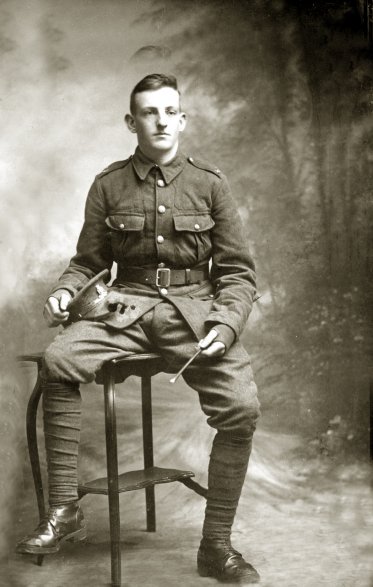
Francis Smith
|
|
The 1901 census shows Francis Smith being second of five brothers living with their mother Sarah Jane Smith at the Brickyard, Harvington. By 1918, all five were involved in the war effort. The eldest was with the army in France, the third son had been discharged after the amputation of a leg, the fourth son was in Ireland and the fifth had been rejected for military service on medical grounds but was working in munitions. He (Francis) had joined the army in 1915 and had spent most of his time in Salonika (Thessaloniki) .
In 1918, he had been home on leave for ten days in August and was serving with 7th Battalion, Duke of Edinburgh’s (Wiltshire) Regiment. It is indicative perhaps of the toll that the war was now taking that this southern regiment was part of 150th Brigade, 50th Division, a Division that was otherwise comprised mainly of regiments from the North-East of England. In October, the Division was part of the Fourth Army advancing towards Germany in what had now become a war of movement. His date of death is recorded on some websites as 7th October 1918 but I suspect this is an administration error as the battalion was on that date resting in reserve. Contemporary reports say that he was killed 4th October 1918 and on that day the battalion attacked and captured a position known as “Prospect Hill” about 60 miles due east of Amiens which they held despite heavy counter-attacks.
Francis Smith was killed by shellfire and his name is recorded on the Vis-en-Artois memorial 6 miles south of Arras. He has no known grave. He was 24.
|
|
|
William Alfred Victor Richard Andrews |
World War 1
|
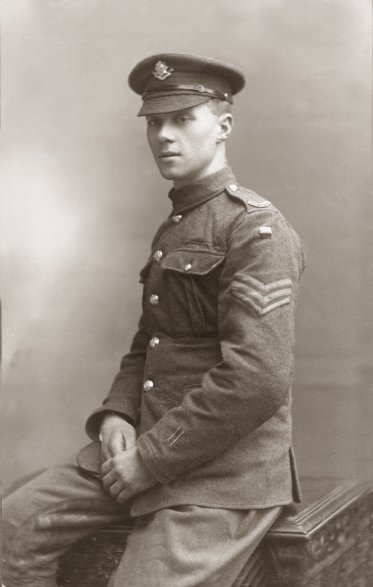
William Alfred Victor Richard Andrews
|
|
William Alfred Victor Richard Andrews was born 17 August 1897 the son of William and Harriet Andrews, Village Street, Harvington. He volunteered on 1st September 1914 and joined the Worcestershire Regiment. He crossed to France on four occasions, the first time on 20th January 1915.With the end of the war in the east, Germany launched a major offensive in the west to try to break the allies before large-scale American forces could arrive. The offensive which began 21st March 1918 came to an end in early June. On 13th June 1918 William Andrews was severely wounded in the head loosing the sight of his right eye and having his lower jaw badly fractured. He was admitted to the general hospital at Rouen 17th June 1918 and underwent several operations there. He was later transferred to Hortons war hospital Epsom and eventually discharged from the army.
He died 7th March 1923 aged 26 and is buried in Harvington.
|
|
|
Alfred Ludlow |
World War 1
|
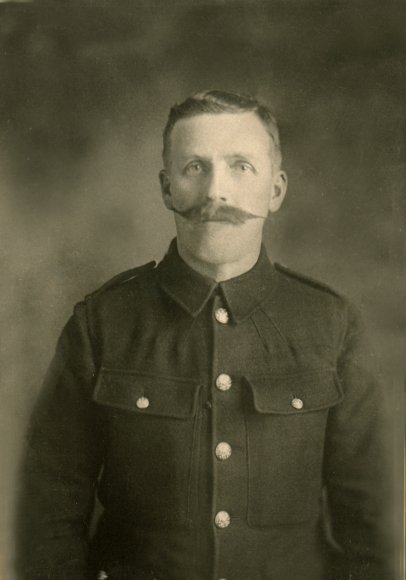
Alfred Ludlow
|
|
Alfred Ludlow was the son of Charles and Selina Elizabeth Ludlow and the brother of Howard and Jesse. In 1897 he married Annie Elizabeth Andrews and had four children. The 1911 census records him as living in the Croft, Grange Lane working as a general carrier, he also worked as a market gardener.
He enlisted in the army 2nd January 1915 joining 9th Battalion Worcestershire Regiment. The 9th Worcesters were part of 39 Brigade 13 Division and left Avonmouth 24 June 1915 and reached the Gallipoli theatre 13 July. Alfred joined them 27 October at Suvla Bay. The regimental record indicates that the battalion was in almost continual action after arrival. By November, the weather had turned from autumnal to winter with thunderstorms turning to snow, sharp frost and bitter winds making conditions very trying. Early in December orders were given to evacuate the peninsula, the 9th Worcesters were one of the battalions chosen to provide a rear-guard force and were thus one of the last to withdraw with the final troops leaving in the early hours 20th December and were taken to the island of Imbros and subsequently to the island of Mudros. After a brief respite, the battalion was ordered to help in the evacuation of the appropriately named Cape Helles landing on 28th December, it immediately came under heavy shell-fire. During the first week of the new year the numbers of men ashore were continually reduced with the final evacuation scheduled for the night of 8/9 January with the last man being embarked shortly after 0400hrs.
A family member has said that Alfred was wounded in the head on this last day of the campaign. He was evacuated first to Malta then to Manchester where he was found to be unfit for further military service and was discharged from the army 9th August 1916 arriving home 12th August. Contemporary reports suggest that Alfred was “enfeebled” on his return home and that his health was “permanently affected” He “received unremitting care and attention from his wife” but in January 1924 suffered a stroke from which he never recovered He died February 12th aged 47 and is buried in Harvington.
|
|
|
Thomas Herbert McGee |
World War 2
|
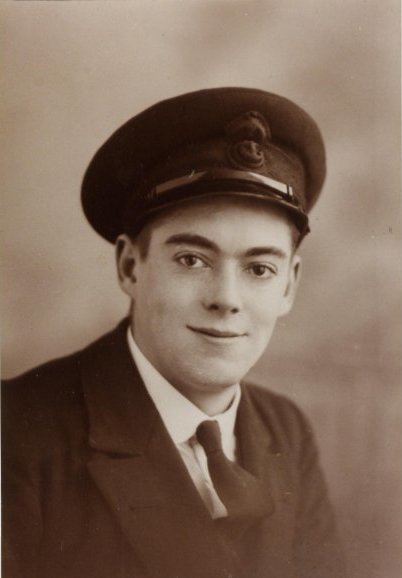
Thomas Herbert McGee
|
|
Petty Officer Thomas Herbert McGee was the son of George and Alice McGee of Yew Tree cottage Harvington. He joined the Royal Navy in 1934 and had married Grace Turner of Feckenham early in 1940.
By 1942, he was serving aboard H.M.S. Worcester an 1120 ton destroyer commissioned in September 1922 based at Harwich.
During the summer and autumn 1941, a major German naval squadron was based in the French port of Brest. However, this port was within range of R.A.F. bombers and subject to frequent attack. Hitler ordered the squadron to return to its home base of Wilhelmshaven in Germany so that it could more easily intercept convoys on their way to Russia via the west coast of Norway. The Kriegsmarine (German Navy) wanted to sail west and north through the Denmark Strait between Greenland and Iceland. Hitler himself ordered the fleet to sail the shortest route through the English Channel. This it must be said was audacious to the point of being suicidal. The operation, code named Cerberus after the three-headed dog, which guards the gate to Hades in Greek mythology, was put into practice at 21.15hrs. 11th February 1942.Three large warships Scharnhorst, Gneisenau, Prince Eugen and six escorting destroyers left Brest and escaped detection for more than twelve hours assisted by faulty British radar and bad weather. They were finally sighted off Beachy Head and were engaged by the coastal batteries at Dover, these proved largely ineffective because bad weather made visual sighting of the fall of shot difficult, and the ships were obviously steaming at maximum speed. A small Royal Navy fleet of destroyers was at the time engaged in gunnery practice in the North Sea and sailed to engage. They were no match for the German fleet and H.M.S. Worcester was severely damaged. The German fleet reached Wihelmshaven mid-morning 13th February 1942.
Thomas McGee died 12th February 1942 aged 26 and is buried at Shotly Gate cemetery near Harwich. His father had died in 1928 from the effects of his service in the First World War.
|
|
|
SOURCES |
|
Contemporary editions of the Evesham Standard and Evesham Journal, plus websites of:-
Find my past.com, Ancestry.com, The National Archives, The Long Long Trail, The Australian Imperial Forces, The Commonwealth War Graves Commission, The Worcestershire Regiment, The Wiltshire Regiment, The South Lancashire Regiment, Midlands Historical Data, History Learning site.
And my thanks to Tony Grey for the loan of the CD with the photographs of the fallen.
THE END
|
|






















